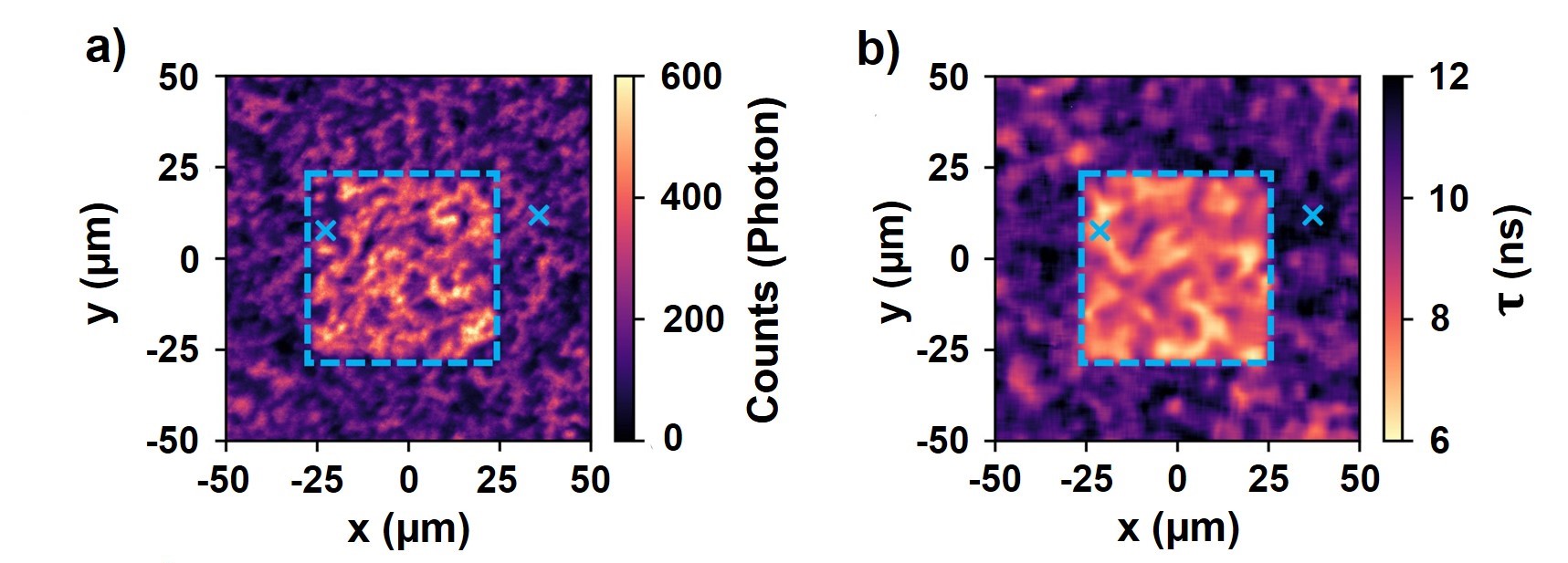
Optics Letters (Vol. 49, Issue 9)
Spatial photoluminescence and lifetime mappings of quasi-2D perovskites coupled with a dielectric metasurface
Hai Xuan Son Bui, Tuyet Thi Doan, Nhan Ha Tri Luong, Dang Khue Luu, Ha Thi Thu Do, Linh Ha Chu, Duong Pham, Oanh Thi Kim Vu, Son Tung Bui, Thuat Tran Nguyen, Xuan Khuyen Bui, Dinh Lam Vu, Hai Son Nguyen, Tung Son Ha, Quynh Le-Van
Light–matter interaction between quantum emitters and optical cavities plays a vital role in fundamental quantum photonics and the development of optoelectronics. Resonant metasurfaces are proven to be an efficient platform for tailoring the spontaneous emission (SE) of the emitters. In this work, we study the interplay between quasi-2D perovskites and dielectric TiO2 metasurfaces. The metasurface, functioning as an open cavity, enhances electric fields near its plane, thereby influencing the emissions of the perovskite. This is verified through angle-resolved photoluminescence (PL) studies. We also conducted reflectivity measurements and numerical simulations to validate the coupling between the quasi-2D perovskites and photonic modes. Notably, our work introduces a spatial mapping approach to study Purcell enhancement. Using fluorescence lifetime imaging microscopy (FLIM), we directly link the PL and lifetimes of the quasi-2D perovskites in spatial distribution when positioned on the metasurface. This correlation provides unprecedented insights into emitter distribution and emitter–resonator interactions. The methodology opens a new (to the best of our knowledge) approach for studies in quantum optics, optoelectronics, and medical imaging by enabling spatial mapping of both PL intensity and lifetime, differentiating between uncoupled quantum emitters and those coupled with different types of resonators.